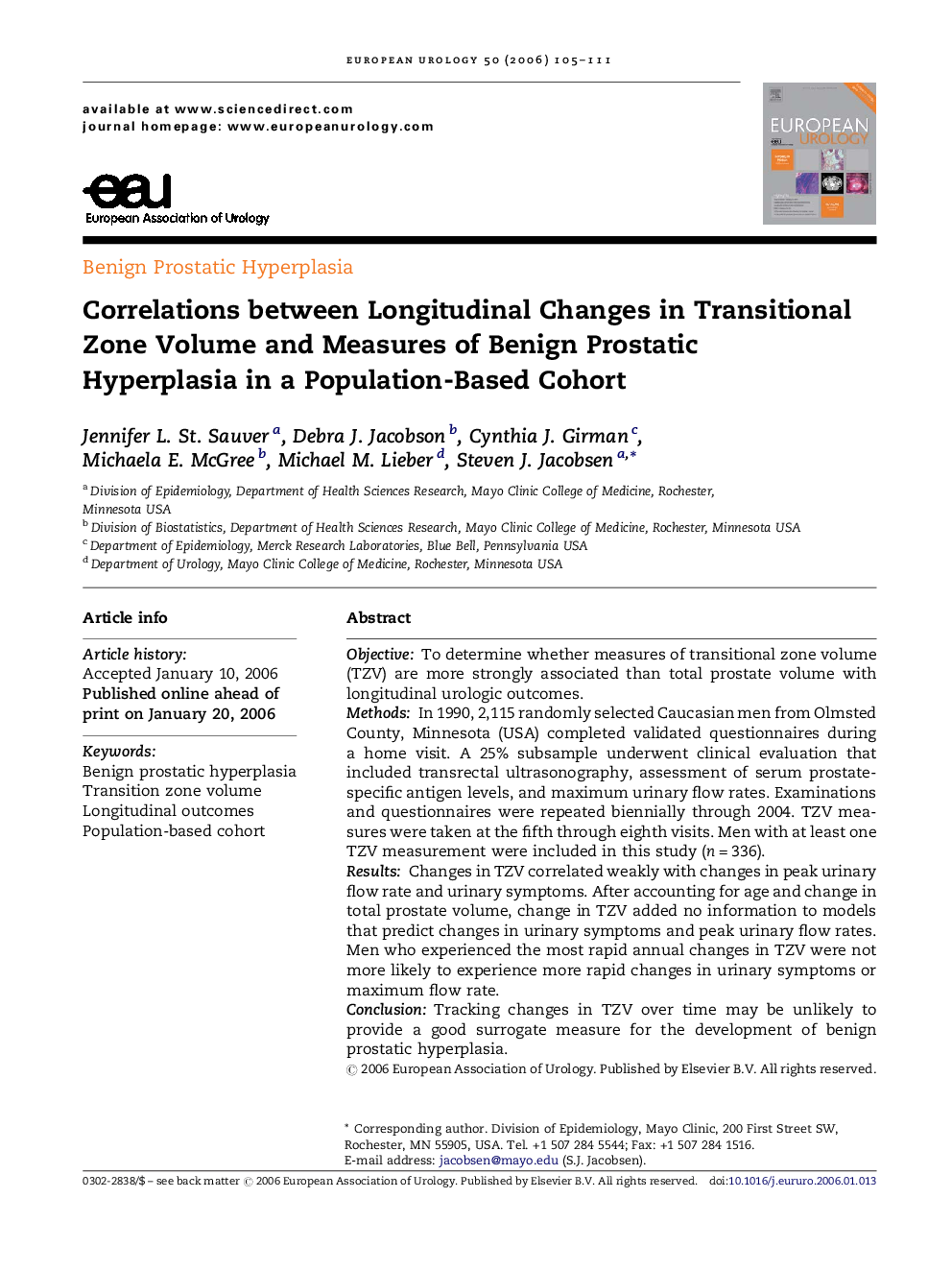| Article ID | Journal | Published Year | Pages | File Type |
|---|---|---|---|---|
| 3923480 | European Urology | 2006 | 7 Pages |
ObjectiveTo determine whether measures of transitional zone volume (TZV) are more strongly associated than total prostate volume with longitudinal urologic outcomes.MethodsIn 1990, 2,115 randomly selected Caucasian men from Olmsted County, Minnesota (USA) completed validated questionnaires during a home visit. A 25% subsample underwent clinical evaluation that included transrectal ultrasonography, assessment of serum prostate-specific antigen levels, and maximum urinary flow rates. Examinations and questionnaires were repeated biennially through 2004. TZV measures were taken at the fifth through eighth visits. Men with at least one TZV measurement were included in this study (n = 336).ResultsChanges in TZV correlated weakly with changes in peak urinary flow rate and urinary symptoms. After accounting for age and change in total prostate volume, change in TZV added no information to models that predict changes in urinary symptoms and peak urinary flow rates. Men who experienced the most rapid annual changes in TZV were not more likely to experience more rapid changes in urinary symptoms or maximum flow rate.ConclusionTracking changes in TZV over time may be unlikely to provide a good surrogate measure for the development of benign prostatic hyperplasia.
